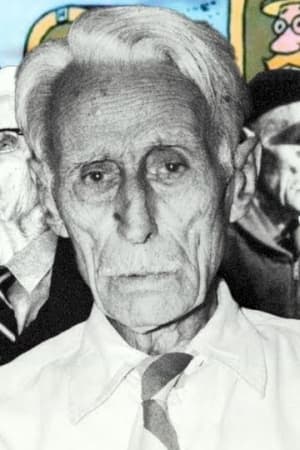Personal Info
Known For Acting
Known Credits 1
Gender Male
Birthday November 14, 1879
Day of Death December 13, 1974 (95 years old)
Place of Birth Leucate, Aude, France
Also Known As
- -
Content Score
100
Yes! Looking good!
Login to report an issue
Biography
Henry de Monfreid (14 November 1879 in Leucate – 13 December 1974) was a French adventurer and author. Born in Leucate, Aude, France, he was the son of artist painter Georges-Daniel de Monfreid and knew Paul Gauguin as a child.
Monfreid was known for his travels in the Red Sea and the Horn of Africa coast from Tanzania to Aden, Yemen, the Arabian Peninsula and Suez, that he sailed in his various expeditions as adventurer, smuggler and gunrunner (during which he said he more than once escaped Royal Navy coast-guard cutters).
In 1911, following in the footsteps of Arthur Rimbaud, Monfreid went to Djibouti, then a French colony, in order to trade coffee. He built a dhow for himself and used it to cross the Red Sea. He had many adventures, eventually prospered, bought a house near the shore in Obock cove, and had a big dhow, the Altair ("Soaring Eagle"), built by a local shipyard. Towards the end of the war, he settled with his family in Obock, away from prying eyes and other colonial governors of Djibouti. His house was near the shore, which allowed his wife to have lights on the terrace if the coastguard spotlight was on the lookout. Completely absorbed in his projects, Monfreid was almost always absent and his wife suffered from his long absences and the overpowering heat of the place. She and the children often took refuge in the Mabla Mountains in the hinterland of Obock Region, which offered a little coolness. In the early twenties, he built a small house Araoué near Harar in Ethiopia, and spent the hot season there with his family. He made enough profit through trafficking (the sale of hashish in Egypt in particular) to buy a flour mill and build a power plant in Dire Dawa, a boomtown that had emerged at the foot of Harar during the construction of the first section of the Djibouti-Addis Ababa road. Between 1912 and 1940 he ran guns through the area, dived for pearls and sea cucumbers, and smuggled hashish and morphine, which he bought from a famous German laboratory, into Egypt, earning several stays in prison. Monfreid always denied having taken part in the slave trade from Africa to Arabia.
He converted to Islam during this period, which included undergoing a circumcision and taking a Muslim name: Abd-el-Haï ("Slave of The Living One").
During the 1930s, Monfreid was persuaded by Joseph Kessel to write about his adventures, and the stories became bestsellers.
During World War II, Monfreid, who was now more than sixty years old, was captured by the British and deported to Kenya as he had served the Italians and his wife, born Armgart Freudenfeld, was daughter to the former German governor of Alsace-Lorraine. ...
Source: Article "Henry de Monfreid" from Wikipedia in English, licensed under CC-BY-SA 3.0.
Henry de Monfreid (14 November 1879 in Leucate – 13 December 1974) was a French adventurer and author. Born in Leucate, Aude, France, he was the son of artist painter Georges-Daniel de Monfreid and knew Paul Gauguin as a child.
Monfreid was known for his travels in the Red Sea and the Horn of Africa coast from Tanzania to Aden, Yemen, the Arabian Peninsula and Suez, that he sailed in his various expeditions as adventurer, smuggler and gunrunner (during which he said he more than once escaped Royal Navy coast-guard cutters).
In 1911, following in the footsteps of Arthur Rimbaud, Monfreid went to Djibouti, then a French colony, in order to trade coffee. He built a dhow for himself and used it to cross the Red Sea. He had many adventures, eventually prospered, bought a house near the shore in Obock cove, and had a big dhow, the Altair ("Soaring Eagle"), built by a local shipyard. Towards the end of the war, he settled with his family in Obock, away from prying eyes and other colonial governors of Djibouti. His house was near the shore, which allowed his wife to have lights on the terrace if the coastguard spotlight was on the lookout. Completely absorbed in his projects, Monfreid was almost always absent and his wife suffered from his long absences and the overpowering heat of the place. She and the children often took refuge in the Mabla Mountains in the hinterland of Obock Region, which offered a little coolness. In the early twenties, he built a small house Araoué near Harar in Ethiopia, and spent the hot season there with his family. He made enough profit through trafficking (the sale of hashish in Egypt in particular) to buy a flour mill and build a power plant in Dire Dawa, a boomtown that had emerged at the foot of Harar during the construction of the first section of the Djibouti-Addis Ababa road. Between 1912 and 1940 he ran guns through the area, dived for pearls and sea cucumbers, and smuggled hashish and morphine, which he bought from a famous German laboratory, into Egypt, earning several stays in prison. Monfreid always denied having taken part in the slave trade from Africa to Arabia.
He converted to Islam during this period, which included undergoing a circumcision and taking a Muslim name: Abd-el-Haï ("Slave of The Living One").
During the 1930s, Monfreid was persuaded by Joseph Kessel to write about his adventures, and the stories became bestsellers.
During World War II, Monfreid, who was now more than sixty years old, was captured by the British and deported to Kenya as he had served the Italians and his wife, born Armgart Freudenfeld, was daughter to the former German governor of Alsace-Lorraine. ...
Source: Article "Henry de Monfreid" from Wikipedia in English, licensed under CC-BY-SA 3.0.
Acting
|
